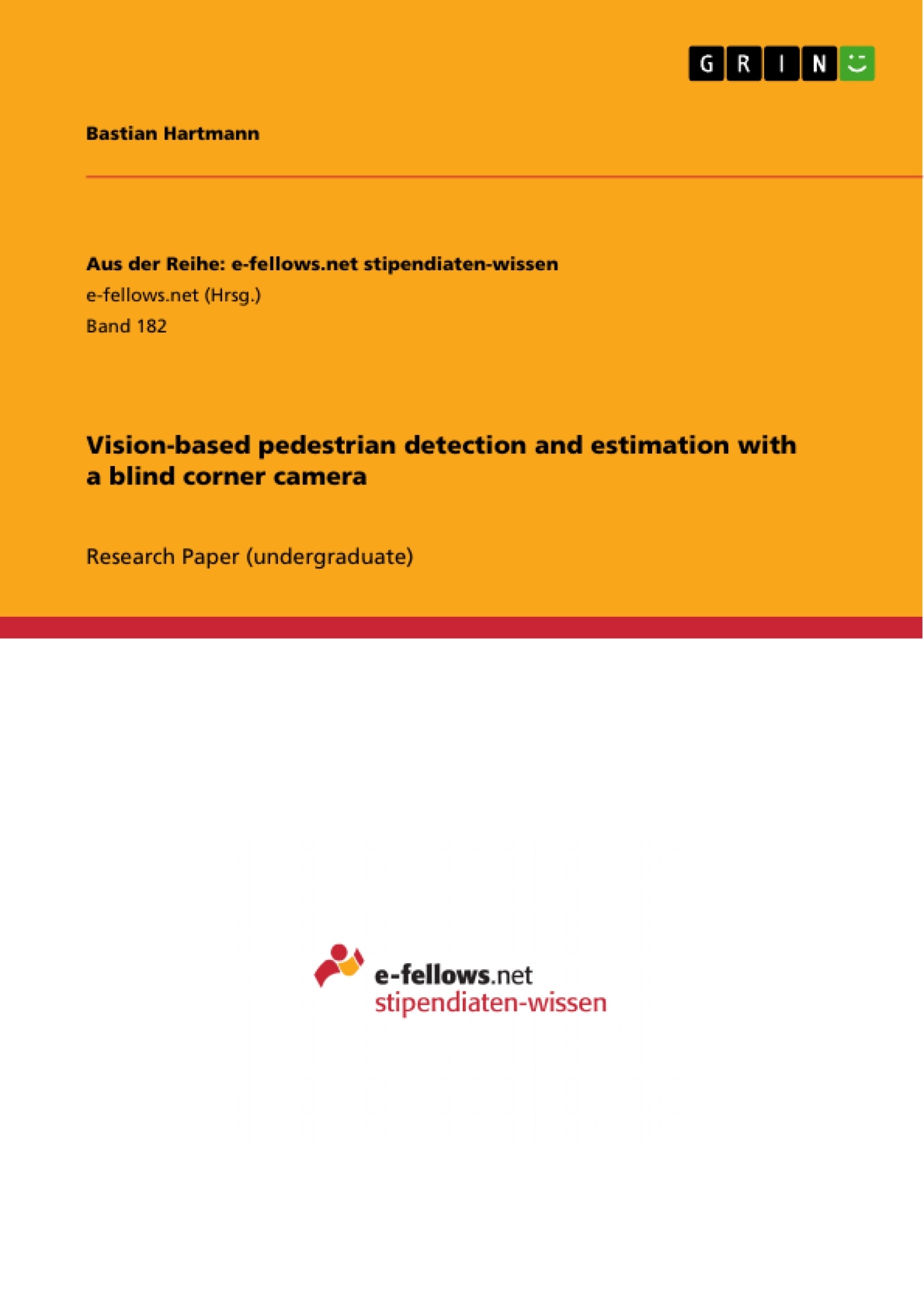Avoiding collision accidents is becoming more and more an important topic in the research
field of driver assistant systems. Especially for vision-based detection systems there are
various approaches, which are built upon many different methods.
This thesis deals with the avoidance of pedestrian accidents, caused by Blind Corner
view problems. The presented approach comprises a pedestrian detection subsystem, which
is part of a large camera system framework covering observation of the car environment.
Based on a Blind Corner Camera and a neural network classification method, research in
this thesis is focused on two aspects: detection improvement and danger level estimation.
Since vision-based classification methods usually are still not able to yield perfect results,
because of the complexity of this task, the detection result has to be improved by
preprocessing and post processing. In this work, first, effects of image enhancement
methods on detection are tested as preprocessing methods and, secondly, a new approach
for a simple tracking and estimation strategy is presented, which improves detection in the
way of a post processing method. Finally, information from tracking and prediction is used
to estimate a danger level for pedestrians, which provides information about how collisionprone
the current situations is.
Inhaltsverzeichnis (Table of Contents)
- Introduction
- Background
- An Approach for Blind Corner Pedestrian Detection
- Pedestrian Detection
- Blind Corner Problem
- A Detection and Estimation System for the Blind Corner Problem
- System Description
- Basic Components
- Detection and Estimation
- Outline of the Thesis
- Basic Components
- Blind Corner Camera
- General Description
- Geometric Information and field of view
- Pedestrian Detection Method
- Vision-Based Pedestrian Detection Methods
- Neural Networks (NN)
- Pedestrian Detection with a Convolutional Neural Network
- Image Preprocessing
- Detection Problems
- CNN Testing
- Evaluation of Test Results
- Problem Summary
- Image Padding
- Method
- Testing
- Evaluation
- Summary
- Image Enhancement
- Approaches
- Methods and Testing
- Evaluation
- Summary
- Tracking and Estimation
- Tracking
- Model and Approach
- Testing
- Evaluation & Improvement
- Summary
- Prediction
- Model and Approach
- Testing
- Evaluation
- Summary
- Estimation
- Model and Approach
- Testing
- Evaluation
- Summary
- Conclusion and Future Work
- Conclusion
- Future Work
Zielsetzung und Themenschwerpunkte (Objectives and Key Themes)
This thesis investigates the avoidance of pedestrian accidents caused by blind corner view problems. The main goal is to develop a system that uses a blind corner camera and a neural network classification method to improve pedestrian detection and estimate the level of danger in real-time. The system aims to provide valuable information to drivers about the potential collision risk in blind corner situations.
- Pedestrian detection in blind corner scenarios
- Improving detection accuracy using image preprocessing techniques
- Tracking and predicting pedestrian movement for improved detection
- Estimating the danger level of pedestrian encounters based on tracking and prediction data
- Developing a robust and reliable system for driver assistance
Zusammenfassung der Kapitel (Chapter Summaries)
- Introduction: This chapter introduces the problem of pedestrian accidents caused by blind corners and outlines the thesis's approach. It describes the existing challenges in pedestrian detection and highlights the importance of a reliable blind corner detection system. The chapter also provides an overview of the thesis structure.
- Basic Components: This chapter details the key components of the system, including the blind corner camera and the convolutional neural network (CNN) used for pedestrian detection. It explains the camera's specifications and field of view, providing a comprehensive overview of the chosen detection method.
- Image Preprocessing: This chapter focuses on addressing the challenges of pedestrian detection in real-world scenarios. It analyzes the limitations of CNN performance and explores different image preprocessing techniques, such as image padding and enhancement, to improve detection accuracy.
- Tracking and Estimation: This chapter dives into the development and evaluation of a tracking and estimation strategy. It describes the model and approach used to track pedestrians, predict their trajectories, and estimate the potential collision risk. The chapter presents the testing results and discusses the effectiveness of the developed methods.
Schlüsselwörter (Keywords)
Blind corner detection, pedestrian detection, convolutional neural network, image preprocessing, tracking, prediction, danger level estimation, driver assistance, collision avoidance, vision-based systems.
- Citar trabajo
- Bastian Hartmann (Autor), 2006, Vision-based pedestrian detection and estimation with a blind corner camera, Múnich, GRIN Verlag, https://www.grin.com/document/176752



